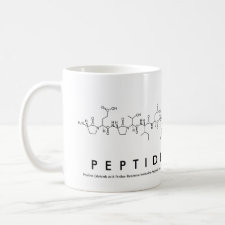
Authors: Yu D, Hu XL, Wei ST, Wang Q, He CY, Liu SR
Article Title: Dummy molecularly imprinted mesoporous silica prepared by hybrid imprinting method for solid-phase extraction of bisphenol A.
Publication date: 2015
Journal: Journal of Chromatography A
Volume: 1396
Page numbers: 17-24.
DOI: 10.1016/j.chroma.2015.04.006
Alternative URL: http://www.sciencedirect.com/science/article/pii/S0021967315005324
Abstract: A novel hybrid dummy imprinting strategy was developed to prepare a mesoporous silica for the solid-phase extraction (SPE) of bisphenol A (BPA). A new covalent template-monomer complex (BPAF-Si) was first synthesized with 2,2-bis(4-hydroxyphenyl)hexafluoropropane (BPAF) as the template. The imprinted silica was obtained through the gelation of BPAF-Si with tetraethoxysilane and the subsequent removal of template by thermal cleavage, and then it was characterized by FT-IR spectroscopy, scanning electron microscopy, transmission electron microscopy, and nitrogen adsorption-desorption isotherms. Results showed that the new silica had micron-level particle size and ordered mesoporous structure. The static binding test verified that the imprinted silica had much higher recognition ability for BPA than the non-imprinted silica. The imprinted silica also showed high extraction efficiencies and high enrichment factor for SPE of BPA. Using the imprinted silica, a SPE-HPLC-UV method was developed and successfully applied for detecting BPA in BPA-spiked tap water and lake water samples with a recovery of 99-105%, a RSD of 2.7-5.0% and a limit of detection (S/N = 3) of 0.3 ng/mL. The new imprinted silica avoided the interference of the residual template molecules and reduced the non-specific binding sites, and therefore it can be utilized as a good sorbent for SPE of BPA in environmental water samples
Template and target information: dummy template, 2,2-bis(4-hydroxyphenyl)hexafluoropropane, BPAF, bisphenol A, BPA
Author keywords: Dummy molecular imprinting, Hybrid imprinting, Ordered mesoporous silica, Solid-phase extraction, bisphenol A, HPLC-UV



Join the Society for Molecular Imprinting

New items RSS feed
Sign-up for e-mail updates:
Choose between receiving an occasional newsletter or more frequent e-mail alerts.
Click here to go to the sign-up page.
Is your name elemental or peptidic? Enter your name and find out by clicking either of the buttons below!
Other products you may like:
 MIPdatabase
MIPdatabase









